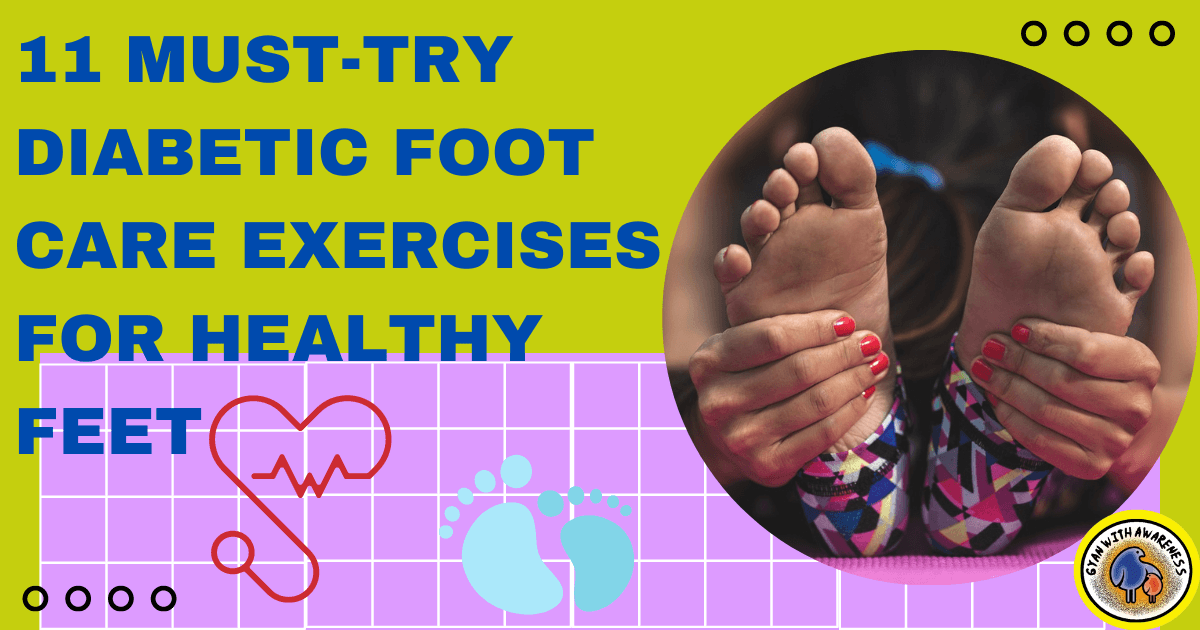In Foot Infections And Diseases and Diabetic Footloose and Infection, the article elaborates on the diseases or problems that can arise as a result of neglecting a daily Diabetic Foot Care routine. Foot infections are especially dangerous for diabetics, posing serious health and well-being risks. Insulin resistance is a chronic disease that impairs the body’s ability to regulate blood sugar levels, resulting in a variety of complications. Foot infections are among the most common and dangerous.
When diabetes is poorly managed, high blood sugar levels can weaken the immune system and impair blood circulation, particularly in the extremities such as the feet. As a result, even minor cuts, blisters, or wounds can quickly turn into severe Foot infections. Furthermore, nerve damage, a common complication of diabetes, may impair the ability to feel pain or detect injuries in the feet, further complicating the situation.
Foot infections in diabetic individuals can progress rapidly, leading to conditions such as diabetic foot ulcers and even gangrene. If left untreated, these Foot infections can have devastating consequences, including the need for amputation. According to medical experts, diabetic individuals are at a significantly higher risk of lower limb amputations compared to those without diabetes. The key to preventing and managing foot infections in diabetes lies in proactive and comprehensive foot care. Regular foot inspections, proper wound management, wearing appropriate footwear, and maintaining optimal blood sugar levels are essential steps in reducing the risk of Foot infections.
Incorporating regular stretches and exercises into your daily routine is one of the most important methods to maintain healthy feet as a person with diabetes.
You can stop Foot Infections And Diseases and increase circulation, bolster muscles, preserve joint flexibility, and lower your risk of Foot infection issues by performing certain foot workouts.
What are Foot Infections or Diseases, specifically diabetic foot care?
A foot infection is a condition in which the tissues of the foot become inflamed and uncomfortable as a result of harmful bacteria, fungi, or viruses invading the body. Symptoms include redness, swelling, pain, and the presence of pus-filled sores. Cuts, wounds, or pre-existing skin conditions can all trigger such infections.
Diabetes raises the risk of foot infections due to weakened immune systems and insufficient blood circulation. Foot infections must be diagnosed and treated as soon as possible to prevent them from spreading and causing further complications. Regular foot examinations and proper hygiene are essential for reducing the risk of foot infections and promoting overall foot health.
For those with diabetes, diabetic foot care is essential for managing and preventing Foot Infections issues. The feet are particularly susceptible to Foot Infections issues because of diminished blood flow and nerve loss associated with diabetes. Diabetes-related foot issues such as foot ulcers, Foot infections, nerve damage, and deformities can result from improper foot care. However, people with diabetes can reduce their risk of problems and maintain healthy feet by practicing good foot care habits, such as routine examinations, hygiene, the right footwear, and prompt medical assistance.
Major Foot Infections And Diseases
👉Achilles Tendon Issues:
Achilles problems are conditions that affect the calf muscles to the heel bone. Common issues with the Achilles tendon include Achilles tendonitis, which results in inflammation and pain in the tendon, and Achilles tendon rupture, which results in a partial or complete tear of the tendon. Surgery, ice, rest, and physical therapy are all common treatments.
👉Ankle Disorder:
👉Arch and Metatarsal Issues:
👉Foot Trauma:
Common foot injuries encompass a variety of conditions, such as sprains, fractures, and contusions. These injuries can occur due to accidents, sports activities, or repetitive motion. Treatment depends on the specific injury but may involve rest, ice, compression, elevation (RICE method), pain management, and immobilization. Rehabilitation and physical therapy are often necessary for complete recovery.
👉Foot Abnormalities:
Foot deformities refer to structural abnormalities in the feet, such as bunions, hammertoes, and flat feet. Bunions are characterized by a bony prominence at the base of the big toe, hammertoes involve abnormal bending of the toes, and flat feet refer to a lack of proper arch support. Treatment options for foot deformities vary depending on the severity and may include orthotic devices, supportive footwear, exercises, splinting, and in some cases, corrective surgery. Early intervention and appropriate foot care can help manage and prevent further progression of deformities.
👉Foot Disorders:
👉Fungal Infections of the Foot:
Fungus problems, such as toenail fungus (onychomycosis) and athlete’s foot (tinea pedis), are common foot conditions caused by fungal infections. Toenail fungus leads to thickened, discolored nails, while athlete’s foot causes itching, redness, and peeling of the skin between the toes. Treatment typically involves antifungal medications, topical creams, powders, or oral medications. Good foot hygiene, keeping the feet clean and dry, wearing breathable footwear, and avoiding sharing personal items can help prevent and manage fungal foot problems.
👉Heel Conditions:
👉Nail Disorders:
👉Dermatological Foot Issues:
👉Vascular and Nerve Conditions of the Foot:
👉Toe Disorders:
Tips to maintain foot health from Foot Infections:
- Prioritize a comprehensive warm-up before exercising.
- Ensure proper footwear for daily activities and sports, providing adequate support.
- Frequently replace worn-out shoes to maintain optimal foot function.
- Gradually increase strength and flexibility to condition the feet and ankles.
- Exercise caution on uneven surfaces, especially while running, and minimize uphill running.
- Pay attention to your body’s signals and avoid excessive strain during activities.
Read More: Stay 1 Step Ahead: Diabetic Foot Spa Tips To Save Your Feet
Best 7 Diabetic Foot Care And Cure Tips
Treating Diabetic Feet Naturally:
- Incorporate regular exercise to improve blood circulation.
- Perform regular foot inspections to detect any issues early.
- 3. Soak your feet in warm water for pain relief and relaxation.
- 4. Keep your blood sugar levels under control.
- 5. Stay persistent and consistent with your foot care routine.
- Take necessary rest and seek proper treatment to prevent injury recurrence.
💡FAQ
📌What is the impact of diabetes on foot care?
📌What are how diabetes contributes to foot problems?
👉 Diabetes can cause foot problems through its effects on blood circulation, nerve function, and immune response. Reduced blood flow, nerve damage (neuropathy), and compromised immune system increase the risk of foot complications such as ulcers, infections, and delayed wound healing.
📌What factors contribute to the severity of foot problems in individuals with diabetes?
👉 Foot problems are worse with diabetes due to impaired blood circulation, nerve damage (neuropathy), and compromised immune function. These factors lead to reduced sensation, delayed wound healing, and increased vulnerability to infections, making foot problems more severe and challenging to treat in individuals with diabetes.

.png)
.png)
.png)


.png)
.png)
.png)
.png)
.png)
.png)
.png)
.png)






